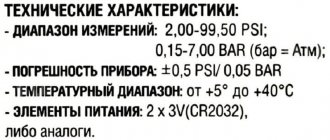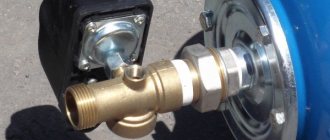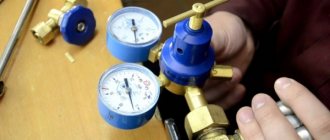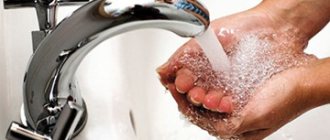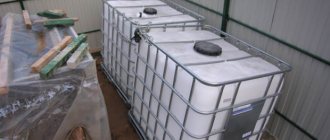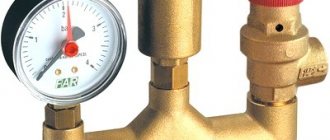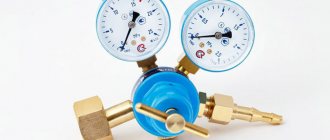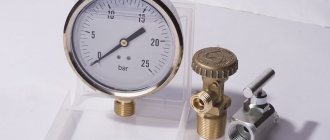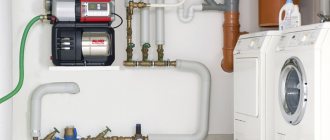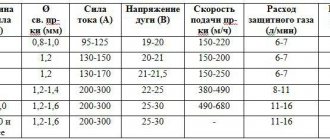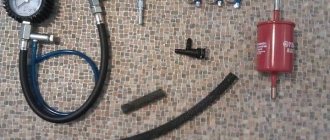Not a single modern building can do without a heating system. And for its stable and safe operation, precise control of coolant pressure is required. If the pressure within the hydraulic graph is stable, then the heating system is operating normally. However, when it increases, there is a risk of pipeline rupture.
A decrease in pressure can also lead to such negative consequences as, for example, the formation of cavitation, that is, air bubbles form in the pipeline, which, in turn, can cause corrosion. Therefore, maintaining normal pressure is extremely necessary, and thanks to the pressure gauge this becomes possible. In addition to heating systems, such devices are used in a wide variety of areas.
Description and purpose of the pressure gauge
A pressure gauge is a device that measures pressure levels. There are types of pressure gauges that are used in a variety of industries, and, of course, each of them has its own pressure gauge. For example, you can take a barometer - a device designed to measure atmospheric pressure. They are widely used in mechanical engineering, agriculture, construction, industry and other areas.
These devices measure pressure, and this concept is flexible, at least, and this value also has its own varieties. To answer the question of what pressure the pressure gauge shows, it is worth considering this indicator as a whole. This is a quantity that determines the ratio of the force acting per unit area of a surface perpendicular to that surface. Almost any technological process is accompanied by this value.
Types of pressure:
- atmospheric - the pressure of the earth's atmosphere, which is created by the mass of the air column;
- absolute pressure is an indicator, the counting of which, taking into account atmospheric pressure, starts from zero;
- excessive - by excess we mean the difference between two indicators, atmospheric and absolute;
- vacuum or, in other words, discharged - on the contrary, represents the difference between absolute and atmospheric or barometric value;
- differential is the difference between two measured indicators that are not related to natural indicators.
To measure each of the above types of indicators, there are certain types of pressure gauges.
Absolute and gauge pressure measurement
Atmospheric pressure is measured with a barometer, which is why it is also called barometric and is designated Pamb or Pbar .
Normal atmospheric pressure is 1 atm=1.033 atm=1.013 x 100,000 Pa=760 mm Hg.
Excess pressure is measured with a pressure gauge, which is why it is also called manometric and is designated Pe or Pizb .
Classification of devices
Types of pressure gauges differ in two ways: by the type of indicator they measure and by the principle of operation.
According to the first sign, they are divided into:
- instruments designed to measure atmospheric pressure, otherwise called barometers;
- instruments measuring excess and absolute;
- vacuum gauges are designed to measure the difference between atmospheric and absolute pressure;
- pressure meters, measure low (up to 40 kPa) excess pressure;
- tagometers, a type of vacuum gauge that measures excess pressure with an upper limit of 40 kPa;
- differential pressure gauges measure pressure differences.
They work on the principle of balancing the pressure difference with a certain force. Therefore, the design of pressure gauges is different, depending on how exactly this balancing occurs.
Based on their operating principle, they are divided into:
- liquid, balancing the pressure difference in such devices occurs due to the hydrostatic pressure of the liquid column; the device uses the principle of communicating vessels;
- spring ones have a simple design and are widely used for measuring medium pressure in wide ranges;
- membrane, based on pneumatic compensation, pressure balancing occurs due to the elastic force of the membrane box;
- electric contact, used in automatic control and alarm systems, since with their help it is possible to regulate the measured medium thanks to the electric contact mechanism built into the housing;
- differential are used to measure the level of liquids under pressure flow of liquid, steam and gas using diaphragms.
According to their intended purpose, there are such types of pressure gauges as:
- general technical instruments are used to measure the pressure of liquids, gases and vapors that are chemically neutral to copper alloys;
- oxygen, they are produced in blue cases with O2 indicated on the dial, used to measure oxygen pressure in cylinders or vacuums;
- acetylene are used to control excess acetylene pressure;
- reference ones are used to test other instruments, since they have great accuracy;
- marine are used in ships and maritime transport;
- railway are used in railway transport;
- recorders have a built-in mechanism that allows you to reproduce the result of your work on paper.
Bourdon tube pressure gauge [edit | edit code ]
Bourdon tube pressure gauges for refrigeration equipment are designed to simultaneously measure steam pressure and the resulting steam temperature. In case of using different types of refrigerants, the device is equipped with several temperature scales. The devices are designed for the use of the most common inorganic and organic refrigerants. In this case, it is necessary to take into account the durability of the material from which the pressure gauge is made. All instruments are designed in accordance with international recommendations for measurement technology, taking into account the requirements of standards and applications.
Operating principle [edit | edit code ]
The basis of the principle of mechanical pressure measurement is an elastic measuring element, capable of deforming in a strictly defined way under the influence of a compressive load and reproducing the tested deformation. With the help of a pointer device, this deformation is converted into a rotational movement of the pointer. By scaling the dial you can find out the pressure experienced by the measuring element and the associated steam temperature.
Temperature scale[edit | edit code ]
There is a direct relationship between temperature and pressure. Therefore, pressure gauges are equipped with two scales:
- One displays the measured pressure, the other the calculated temperature value.
- Temperature scale values are based on tables of water vapor properties of saturated refrigerants at a reference pressure of 1013.25 millibars.
They are observed only for pure refrigerants indicated on the scale. Since in practice chemically pure refrigerants are used very rarely, and the operating pressure does not coincide with the reference pressure, the approximate temperature is displayed on the dial. But this is quite enough for work.
Measuring ranges [edit | edit code ]
Compared to other technical characteristics, measuring ranges have the greatest practical significance. A special feature of pressure gauges working with refrigerants is the presence of a combined scale with pressure and temperature readings. The standard scale gives the division value in bars and °C. There are options for displaying temperature in “F” and pressure in kPa/MPa or psi. inch.
Fill fluid [ edit | edit code ]
Pressure gauges with liquid filling are used for measurements involving large variable loads, as well as strong vibration or pulsation. The liquid ensures smooth movement of the needle and good readability even under maximum load and strong vibration. In addition, the lubricating effect of the shock-absorbing fluid significantly reduces wear on the device. As a rule, glycerin is used as a shock-absorbing fluid.
Contacts [edit | edit code ]
Instruments with an electrical measuring sensor or terminal contact use paraffin oil, which is not a conductor. As an additional option, silicone filler of varying degrees of viscosity is used.
Device and principle of operation
The pressure gauge device can have a different design depending on the type and purpose. For example, a device that measures water pressure has a fairly simple and understandable design. It consists of a body and a scale with a dial that displays the value. The housing has a built-in tubular spring or membrane with a holder, a tripod-sector mechanism and an elastic element. The device operates on the principle of equalizing pressure due to the force of changing the shape (deformation) of the membrane or spring. And the deformation, in turn, sets in motion a sensitive elastic element, the action of which is displayed on the scale using an arrow.
Liquid pressure gauges consist of a long tube that is filled with liquid. In the tube with liquid there is a movable plug, which is influenced by the working environment; the pressure force should be measured depending on the movement of the liquid level. Pressure gauges can be designed to measure differences; such devices consist of two tubes.
Piston - consist of a cylinder and a piston located inside. The working medium in which the pressure is measured acts on the piston and is balanced by a load of a certain size. When the indicator changes, the piston stirs and activates the arrow, which shows the pressure value.
Thermal conductors consist of filaments that heat up when an electrical discharge is passed through them. The operating principle of such devices is based on a decrease in the thermal conductivity of gas with pressure.
The Pirani pressure gauge is named after Marcello Pirani, who first designed the device. Unlike thermal conductors, they consist of metal wiring, which also heats up when current passes through it and cools under the influence of the working medium, namely gas. As the gas pressure decreases, the cooling effect also decreases, and the wiring temperature increases. The quantity is measured by measuring the voltage in a wire while current passes through it.
Ionization devices are the most sensitive devices that are used to calculate low pressures. As the name of the device suggests, its operating principle is based on the measurement of ions that are formed under the influence of electrons on a gas. The number of ions depends on the density of the gas. However, ions have a very unstable nature, which directly depends on the working medium of gas or steam. Therefore, for clarification, another type of McLeod pressure gauge is used. Clarification occurs by comparing the readings of the ionization pressure gauge with the readings of McLeod's device.
There are two types of ionization devices: hot and cold cathode.
The first type was designed by Bayard Allert; it consists of electrodes that operate in triode mode, and the filament acts as the cathode. The most common type of hot cathode is an ion manometer, in the design of which, in addition to a collector, filament and grid, a small ion collector is built in. Such devices are very vulnerable; they can easily lose calibration, depending on operating conditions. Therefore, the readings of these devices are always logarithmic.
The cold cathode also has its own varieties: an integrated magnetron and a Penning pressure gauge. Their main difference is the position of the anode and cathode. There is no filament in the design of these devices, so they require a voltage of up to 0.4 kW to operate. The use of such devices is not effective at low pressure levels. Because they may simply not earn money and not turn on. The principle of their operation is based on the generation of current, which is impossible in the complete absence of gas, especially for a Penning pressure gauge. Since the device only works in a certain magnetic field. It is necessary to create the desired trajectory of ion movement.
Operating principle of a technical pressure gauge
On the territory of our country there are many regulatory documents regulating the rules of operation of pipelines, tanks, etc. And, almost every document states that a red stripe must be marked on the pressure gauge scale. Its purpose is to indicate the limit values of the measured parameter. Instead of drawing a line on the scale, it is permissible to use other marking methods, for example, a red metal flag. This is necessary so that you can observe the controlled parameter from afar.
In accordance with safety regulations in the oil and gas industry, it is expressly stated that pressure gauges located at a height of more than two meters must be marked with such a mark.
By its design, a technical pressure gauge is classified as a tubular-spring mechanism. Structurally, it consists of:
- housings;
- riser;
- hollow curved tube;
- arrow(s);
- sector with applied teeth;
- gears;
- springs.
Marking by color
Pressure gauges that measure gas pressure have colored bodies; they are specially painted in different colors. There are several primary colors that are used to paint the body. For example, pressure gauges that measure oxygen pressure have a blue body with the symbol O2, ammonia pressure gauges have a yellow body, acetylene - white, hydrogen - dark green, chlorine - gray. Devices measuring the pressure of flammable gases are painted red, and non-flammable ones are painted black.
3.Description of the pilot plant
The installation consists of a hermetic vessel (1), filled with water to a certain height, and a water measuring glass (2), which is used to measure the water level in the vessel. The vessel has fittings with taps PK1, TK1, TK4, TK5 for connecting pressure devices, TK2, TK3 for connecting an air pump. The installation kit includes a piezometer P, a vacuum gauge B, lower MNn and upper MNv pressure gauges, as well as an air pump (3), which is used to change the pressure above the free surface of the liquid in vessel 1.
Benefits of use
First of all, it is worth noting the versatility of the pressure gauge, which lies in the ability to control pressure and maintain it at a certain level. Secondly, the device allows you to obtain accurate indicators of the norm, as well as deviations from them. Thirdly, accessibility, almost anyone can afford to purchase this device. Fourthly, the device is capable of operating stably and uninterruptedly for a long time, and does not require special conditions or skills.
The use of such devices in areas such as medicine, chemical industry, mechanical and automotive industry, maritime transport and others requiring precise pressure control greatly facilitates work.
Which blood pressure monitor should you choose?
Types of tonometers and their comparative characteristics are presented in the table.
| Characteristic | Mechanical | Semi-automatic | Auto |
| Composition of the apparatus | Cuff, bulb, pressure gauge, phonendoscope | Cuff, bulb, electronic device | Cuff, electronic device |
| Air injection | On your own, with the help of a pear | On your own, with the help of a pear | Device |
| Decreased air pressure in the cuff | On your own, with the help of a pear | On your own, with the help of a pear | Device |
| How to determine blood pressure level | Using a phonendoscope | Appliance yourself | Appliance yourself |
| Where is the result displayed? | Pressure gauge scale | Electronic scoreboard | Electronic scoreboard |
| Additional options | No | Counting the pulse, determining its rhythm | Counting the pulse, determining its rhythm |
| Difficulty level | Difficult | Average | Easily |
| Possibility of independent use | Difficult, requires some skill | Easily | Easily |
| Measurement reliability | High with adequate skill in using the device | Depends on power supply or battery quality | Depends on power supply or battery quality |
| Price | Low | Average | High |
In order to decide which tonometer to choose for a particular person, you need to take into account several factors, for example:
- ability to use the device or the possibility of training;
- age;
- living together with someone who will help in measuring;
- concomitant diseases accompanied by hand weakness or trembling;
- level of hearing and vision;
- other individual factors.
As can be seen from the table, measuring blood pressure with an electronic tonometer is easier than with a mechanical one, because it does not require special skills in listening to tones with a phonendoscope. This factor plays an important role when buying a device for an elderly person.
Some patients may find it difficult to adjust the valve on the bulb when inflating and deflating air from the cuff, in which case it is better to use an automatic tonometer.
Also, when choosing a device, you need to remember who will use it: if a person lives alone, then it is better to abandon the mechanical one, and measure pressure with a semi-automatic tonometer or an automatic one.
Instrument accuracy class
There are a lot of pressure gauges, and each type is assigned a certain accuracy class according to GOST requirements, which means the permissible error expressed as a percentage of the measurement range.
There are 6 accuracy classes: 0.4; 0.6; 1; 1.5; 2.5; 4. Each type of pressure gauge also differs. The above list refers to working pressure gauges. For spring devices, for example, the following indicators correspond to 0.16; 0.25 and 0.4. For piston engines - 0.05 and 0.2 and so on.
The accuracy class is inversely proportional to the diameter of the instrument scale and the type of instrument. That is, if the scale diameter is larger, then the accuracy and error of the pressure gauge decreases. The accuracy class is conventionally denoted by the following Latin letters KL; you can also find CL, which is indicated on the instrument scale.
The error value can be calculated. For this, two indicators are used: accuracy class or KL and measurement range. If the accuracy class (KL) is 4, then the measurement range will be 2.5 MPa (Megapascal), and the error will be 0.1 MPa. of the accuracy class and the measurement range, divided by 100, is calculated using the formula . Since the error is expressed as a percentage, the result must be converted to a percentage by dividing by 100.
In addition to the main type, there is an additional error. If ideal conditions or natural values that affect the design features of the device are used to calculate the first type, then the second type directly depends on the conditions. For example, from temperature and vibration or other conditions.
Color coding [ edit | edit code ]
Quite often, the housings of pressure gauges used to measure gas pressure are painted in different colors. Thus, pressure gauges with a blue body are designed to measure oxygen pressure. Pressure gauges for ammonia have a yellow body color, white for acetylene, dark green for hydrogen, grayish-green for chlorine. Pressure gauges for propane and other flammable gases have a red body color. The black housing has pressure gauges designed to work with non-flammable gases.
The term “pressure gauge” used in the text is general and, in addition to pressure gauges itself, also implies vacuum gauges and pressure-vacuum gauges. This material does not cover digital devices.
Pressure gauges are one of the most common devices in industry and housing and communal services. For more than a hundred years they have been reliably serving people. The needs of production initiated the development of pressure gauges for various purposes, differing in size, design, connecting thread, ranges and units of measurement, and accuracy class. The wrong choice of devices leads to their premature failure, insufficient measurement accuracy, or overpayment for unnecessary functionality.
Pressure gauges can be classified according to the following criteria.
1.1. Standard technical pressure gauges are designed for measuring excess and vacuum pressure of non-aggressive, non-crystallizing liquids, steam and gas.
1.2. Technical special – pressure gauges for working with specific media or under specific conditions. The following pressure gauges are special:
– pressure gauges for the food industry.
Oxygen pressure gauges are structurally no different from technical pressure gauges, but during the production process they undergo additional cleaning from oils, since when oxygen comes into contact with oils, ignition or an explosion can occur. The scale is marked with the designation O2.
Acetylene pressure gauges are manufactured without the use of copper and its alloys. This is due to the fact that the interaction of copper and acetylene produces explosive copper acetylene. Acetylene pressure gauges are marked with the symbols C2H2.
Ammonia and corrosion-resistant pressure gauges have mechanisms made of stainless steel and alloys that are not subject to corrosion when interacting with aggressive environments.
The design of vibration-resistant pressure gauges ensures operability when exposed to vibration in a frequency range approximately 4–5 times higher than the permissible vibration frequency of standard technical pressure gauges.
Some types of vibration-resistant pressure gauges can be filled with damping fluid. Glycerin (operating temperature range from -20 to +60 o C) or PMS-300 liquid (operating temperature range from -40 to +60 o C) is used as a damping liquid.
Pressure gauges for the food industry do not have direct contact with the medium being measured and are separated from it by a membrane separating device. The space above the membrane is filled with a special liquid, which transmits force to the pressure gauge mechanism.
Pressure gauge housings are usually painted in a color corresponding to the application: ammonia - yellow, acetylene - white, for hydrogen - dark green, for flammable gases, for example, propane - red, for oxygen - blue, for non-flammable gases - in black.
2. Electric contact (signaling) pressure gauges.
Electric contact (signaling) pressure gauges include contact groups for connecting external electrical circuits. Used to maintain pressure in technological installations in a given range.
Contact groups of electrical contact (signaling) pressure gauges in accordance with GOST 2405-88 can have one of four designs:
III – two break contacts: left indicator (min) – blue, right (max) – red;
IV – two closing contacts: left indicator (min) – red, right (max) – blue;
V – left normally open contact (min); right normally open contact (max) – both indicators are blue;
VI – left normally open contact (min); right contact is normally closed (max) – both indicators are red.
Most Russian factories accept version V as standard. That is, if the application does not indicate the design of the electrical contact pressure gauge, then the customer is almost guaranteed to receive a device with contact groups of this design. In the absence of a passport, you can determine the design of the contact groups by the color of the indicators.
Electroconical (signaling) pressure gauges are divided into general industrial and explosion-proof. The ordering of explosion-proof pressure gauges must be approached very carefully so that the type of explosion protection of the device corresponds to the high-risk facility.
3. Pressure units.
Pressure gauge scales are calibrated in one of the following units: kgf/cm2, bar, kPa, MPa. However, you can often find pressure gauges with a double scale. The first scale is graduated in one of the units listed above, the second in psi - pound-force per square inch. This unit is non-systemic and is used mainly in the USA. In table 1 shows the relationship between these units.
Table 1. Ratio of pressure units
Instruments calibrated in kPa are called pressure gauges for measuring low gas pressures. A membrane box is used as a sensing element, while in pressure gauges for high pressures a curved or spiral tube is used.
4. Range of measured pressures.
In physics, there are several types of pressure: absolute, barometric, excess, vacuum. Absolute pressure is pressure measured relative to absolute vacuum. Absolute pressure cannot be negative.
Barometric is atmospheric pressure, which depends on altitude, temperature and humidity. At zero meters above sea level it is taken to be 760 mm Hg. In technical pressure gauges, this value is taken as zero, that is, the value of barometric pressure does not affect the measurement results.
Excess pressure is the difference between absolute pressure and barometric pressure, provided that the absolute pressure exceeds the barometric pressure.
Vacuum is the difference between absolute pressure and barometric pressure, when absolute pressure is less than barometric pressure. Therefore, vacuum pressure cannot be greater than barometric pressure.
Based on this, it becomes clear that vacuum gauges measure vacuum. Pressure and vacuum gauges cover the area of vacuum and excess pressure. Pressure gauges measure excess pressure. There is another class of instruments called differential pressure gauges. Differential pressure gauges are connected to two points of one system and show the pressure difference of gaseous or liquid substances.
The ranges of measured pressures are standardized and assumed to be equal to a certain range of values, which are given in table. 2.
Table 2. Standard range of values for calibration of scales.
Ranges of measured pressures, kgf/cm 2
-1…0,6; 1,5; 3; 5; 9; 15; 24
0…0,6; 1; 1,6; 2,5; 4; 6; 10; 16; 25; 40; 60; 100; 160; 250; 400; 600; 1000; 1600
Ultra-high pressure gauges
0…2500; 4000; 6000; 10000
5. Accuracy class of pressure gauges
Accuracy class is the permissible error of a device, expressed as a percentage of the maximum scale value of a given device. The accuracy class is applied by manufacturers to the scale. The lower this value, the more accurate the device. The same type of pressure gauge can have different accuracy classes. For example, in the standard version it produces devices with an accuracy class of 1.5, and upon request it can produce similar devices with an accuracy class of 1.0. In table Table 3 shows data on accuracy classes in relation to various types of pressure gauges.
Table 3. Accuracy class of pressure gauges from Russian manufacturers.
Pressure gauges for precise measurements
Ultra-high pressure gauges
For imported devices, the accuracy class value may differ slightly from Russian analogues. For example, European technical pressure gauges may have an accuracy class of 1.6.
The smaller the diameter of the device body, the lower its accuracy class.
6. Case diameter
Most often, pressure gauges are manufactured in cases with the following diameters: 40, 50, 60, 63, 100, 150, 160, 250 mm. But you can find devices with other body sizes. For example, vibration-resistant pressure gauges produced by Fiztekh, type DM8008-Vuf (DA8008-Vuf, DV8008-Vuf) are manufactured in cases with a diameter of 110 mm, and a smaller version of this device, DM8008-Vuf (DA8008-Vuf, DV8008-Vuf) Version 1, has diameter 70 mm.
Read also: How to make a throwing knife from wood
Pressure gauges with a body of 250 mm are often called boiler gauges. They do not have special designs and are used at thermal power facilities and allow the operator to control pressure at several nearby installations from the operator’s workplace.
7. Design of pressure gauges
A fitting is used to connect the pressure gauge to the system. There are radial (bottom) location of the fitting and axial (rear) location. The axial fitting can be centrally located or offset relative to the center. Due to design features, many types of pressure gauges do not have an axial fitting. For example, signaling (electrical contact) pressure gauges are made only with a radial fitting, since an electrical connector is located on the back side.
The size of the thread on the fitting depends on the diameter of the body. Pressure gauges with diameters of 40, 50, 60, 63 mm are manufactured with threads M10x1.0-6g, M12x1.5-8g, G1/8-B, R1/8, G1/4-B, R1/4. On larger pressure gauges, M20x1.5-8g or G1/2-B is used. European standards provide for the use of not only the above types of threads, but also conical ones - 1/8 NPT, 1/4 NPT, 1/2 NPT. In addition, industry uses specific connections. Pressure gauges measuring high and ultra-high pressures can have internal conical or cylindrical threads.
When ordering pressure gauges, it is recommended to specify the thread type. Failure to comply with this rule may result in additional costs associated with replacing installation fittings.
The design of the pressure gauge body depends on the installation method and location. Devices installed openly on highways, as a rule, do not have additional fastenings. When installed in cabinets, control panels, pressure gauges with a front or rear flange are used. The following versions of pressure gauges can be distinguished:
– with a radial fitting without a flange;
– with a radial fitting with a rear flange;
– with an axial fitting with a front flange;
– with an axial fitting without a flange.
Standard pressure gauges usually have a degree of protection IP40. Special pressure gauges, depending on the application, can be manufactured with degrees of protection IP50, IP53, IP54 and IP65.
In some cases, pressure gauges must be sealed in order to prevent the possibility of unauthorized opening of the devices. For this purpose, some manufacturers make an eye on the body and complete it with a screw with a hole in the head, allowing the seal to be installed.
8. Protection against high temperatures and pressure changes
Temperature has a serious influence on the measurement error and service life of pressure gauges. This factor affects the internal elements of the structure upon contact with the measured medium, and externally through the ambient temperature.
Most pressure gauges should be operated at ambient and measured medium temperatures of no more than +60 o C, maximum +80 o C. Some manufacturers manufacture devices designed for measured medium temperatures up to +150 o C and even +300 o C. However, measurements at high temperatures can be produced using standard pressure gauges. To do this, the pressure gauge must be connected to the system via a siphon outlet (cooler). A siphon outlet is a specially shaped tube. At the ends of the outlet there is a thread for connecting to the main line and attaching a pressure gauge. The siphon outlet forms a branch in which there is no circulation of the measured medium. As a result, at the point where the pressure gauge is connected, the temperature may differ significantly from the temperature in the main line.
Another factor that affects the longevity of pressure gauges is sudden pressure changes or water hammer. To reduce the influence of these factors, dampers are used. The damper can be made as a separate device installed in front of the pressure gauge or mounted in the internal channel of the device holder.
There is another way to protect the pressure gauge. In cases where there is no need to constantly monitor the pressure in the system, a pressure gauge can be installed through a push-button valve. Thus, the device will be connected to the controlled line only for the time during which the tap button is pressed.
2.1. Familiarize yourself with instruments for measuring pressure: piezometer, pressure gauge, differential pressure gauge, vacuum gauge.
2.2. Learn to determine pressure at a given point using instrument readings.
2.3. Establish a connection between the readings of various instruments.
What does it show and what does it measure?
A car pressure gauge is a device that shows the density of the air inside a tire. Unit of measurement kgf/cm² or Bar. The measuring device can also be used to measure pressure in air suspension cylinders. Ready-made pneumatic kits are often equipped with dial gauges from a KamAZ vehicle, since it has a mechanical dial gauge that shows pressure up to 10 atmospheres and is distinguished by the accuracy of the indicators. The principle of operation of the pressure gauge for tires and air suspension is the same, since they work on the same principle.
What is a pressure gauge for? First of all, for safety. In previous articles, we touched on the topic of tire pressure differences and what this leads to (uneven tire wear, increased driving hazards, increased fuel consumption). Often the device is integrated into a pump, be it mechanical or electrical, but to read tire pressure, the pump must be securely attached to the valve, which is completely inconvenient.
